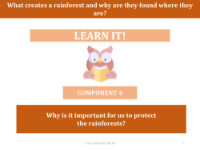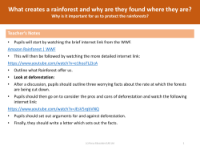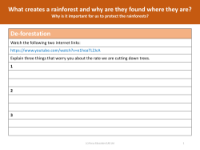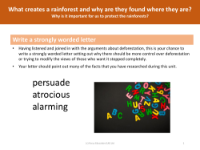Deforestation - Info sheet
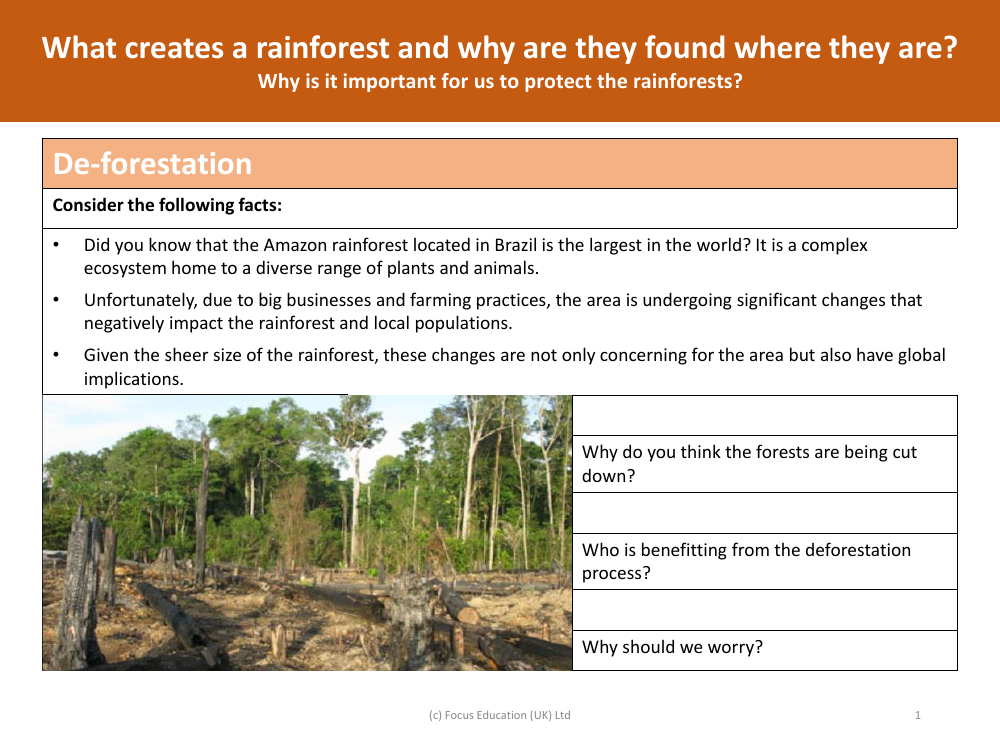
Geography Resource Description
Deforestation, the process of clearing forests for non-forest use, is a critical environmental issue that has far-reaching consequences. The Amazon rainforest, the largest in the world and located in Brazil, is a prime example of this. This vast and intricate ecosystem, teeming with a wide variety of flora and fauna, is currently facing significant threats due to the expansion of large businesses and farming practices. These activities not only have severe implications for the local environment and communities but also for the global climate and biodiversity. Questions are raised about who benefits from deforestation and the reasons behind the large-scale clearance of these vital ecosystems. The importance of rainforests and the need to protect them is underscored by their unique role in the Earth's ecology.
Deforestation is driven primarily by the need to create new farmland for crops or livestock, timber production, and other activities such as mining and oil extraction. The destruction of forests is a complex issue with various stakeholders and interests involved. In educational settings, students are encouraged to engage with the topic by creating lists of reasons why deforestation should be halted, slowed down, or managed more sustainably. Presenting these points in class helps students articulate and understand the importance of preserving rainforests. Additionally, students are prompted to consider counter-arguments, exploring the reasons why some may advocate for deforestation, and to discuss these viewpoints as a class, fostering a comprehensive understanding of the deforestation debate and its impact on rainforests and their unique characteristics.
